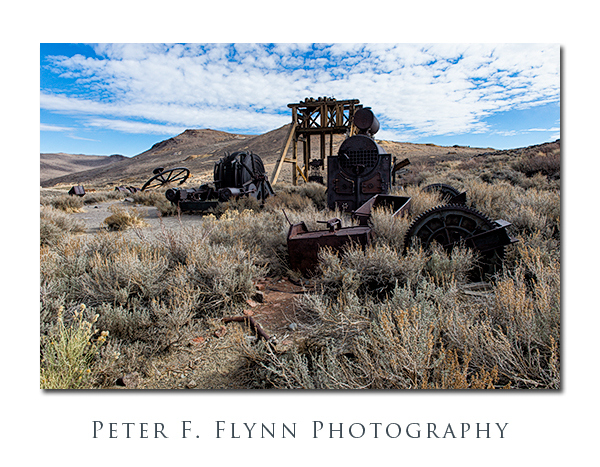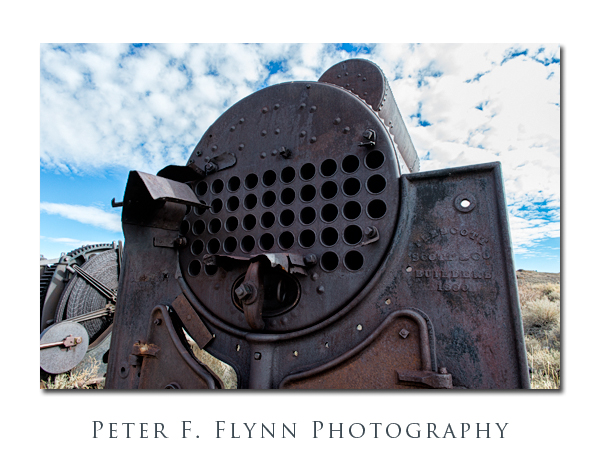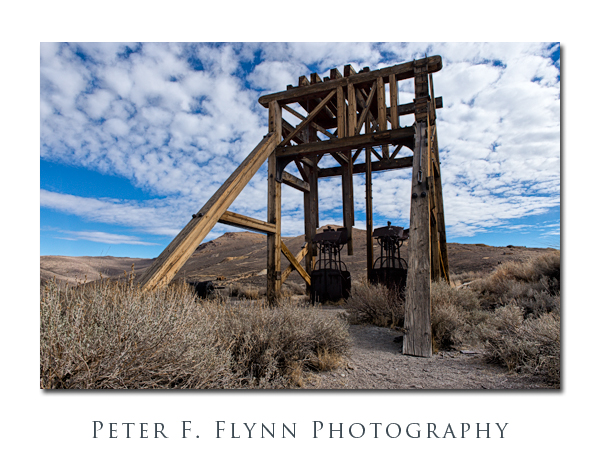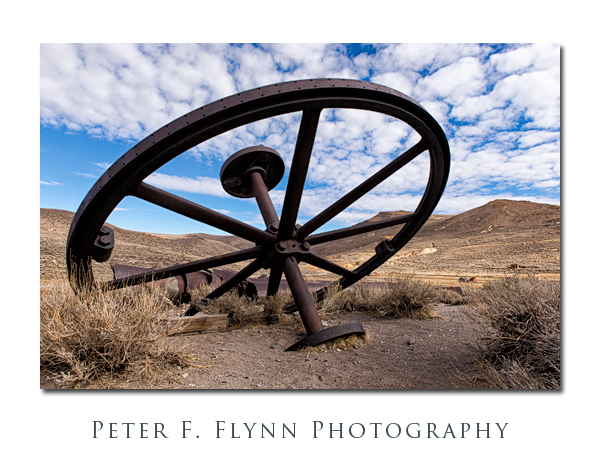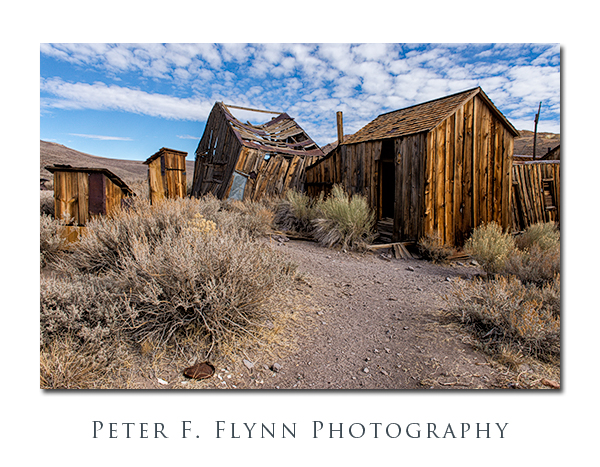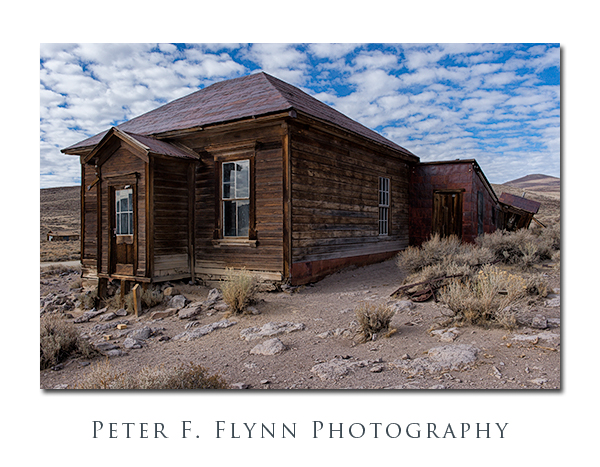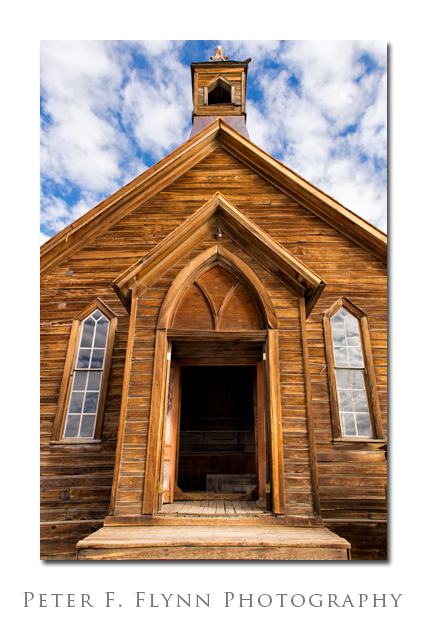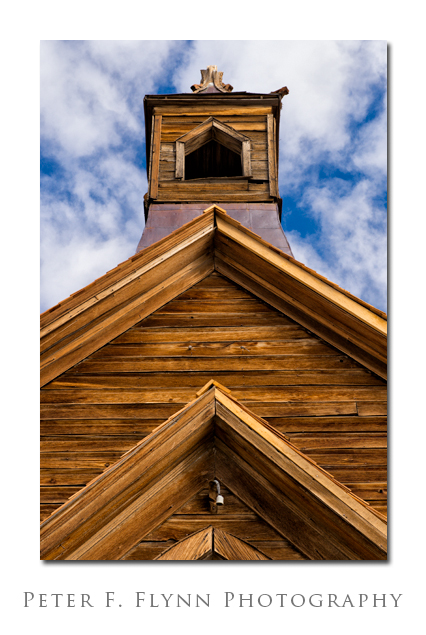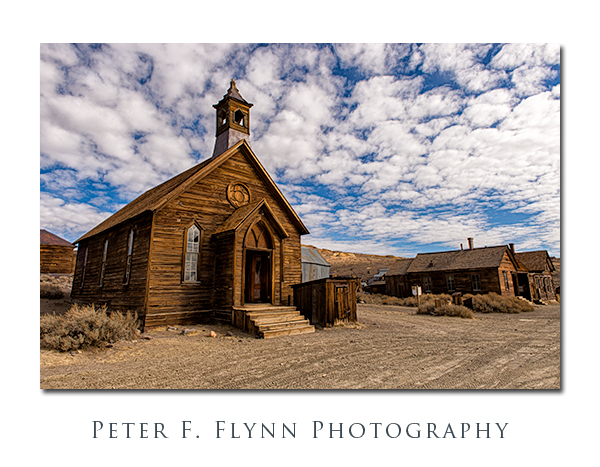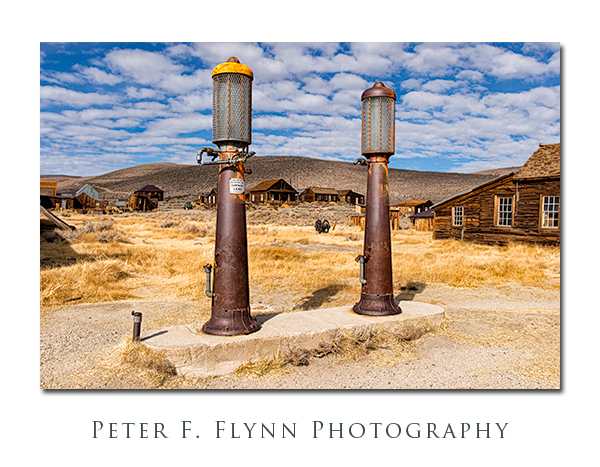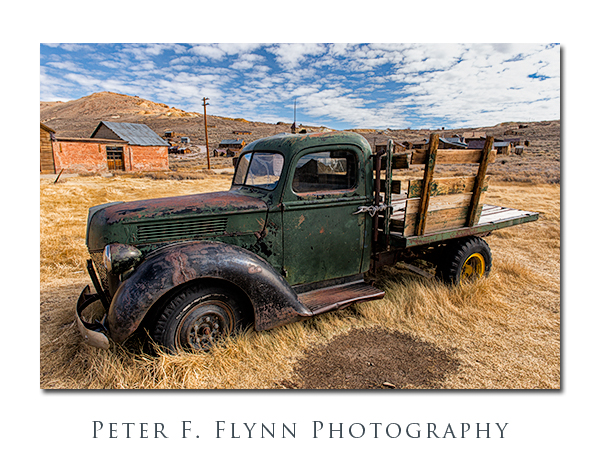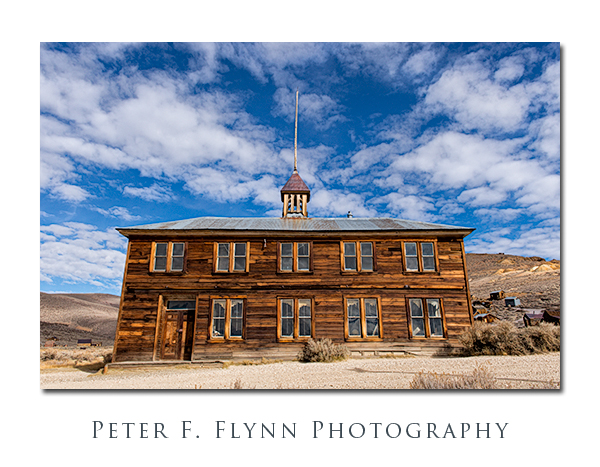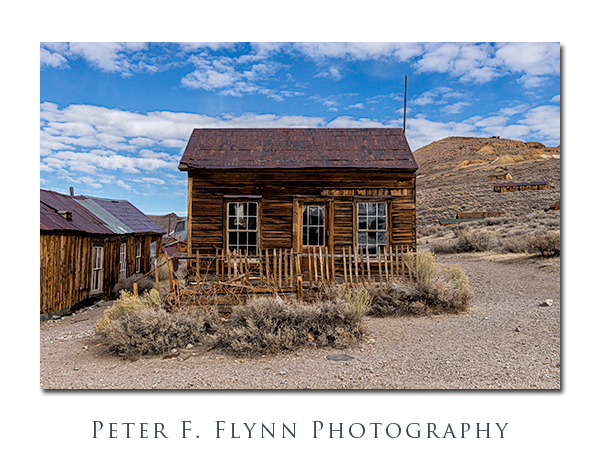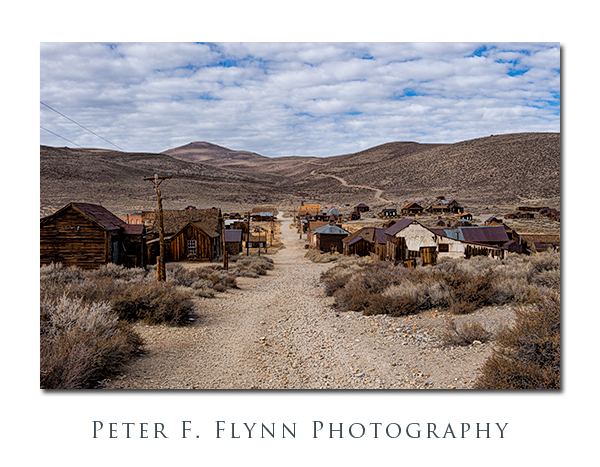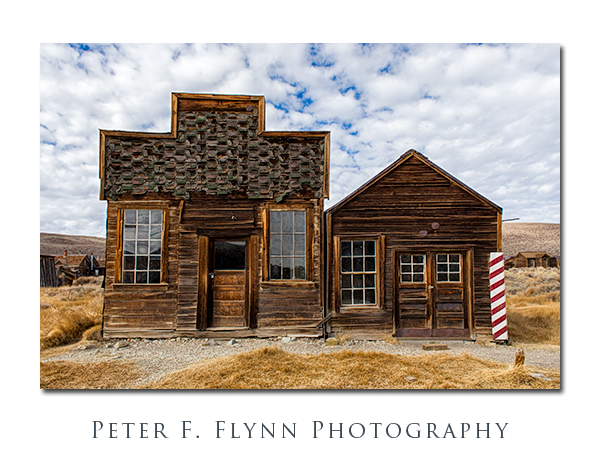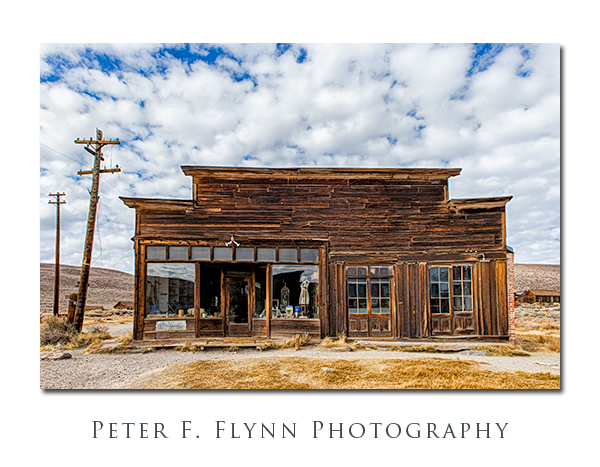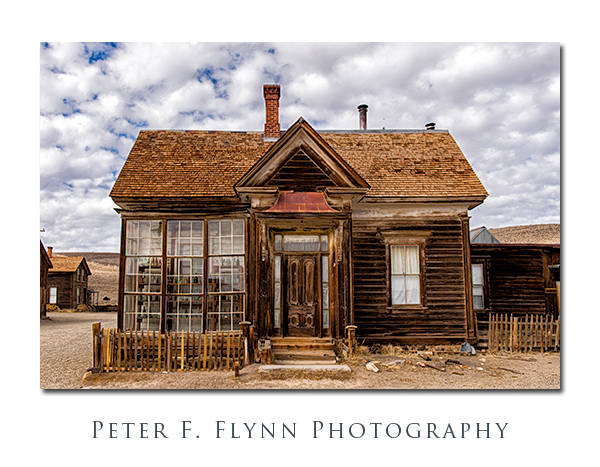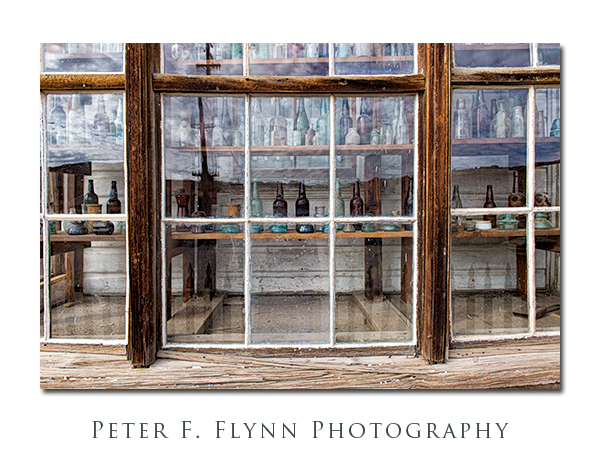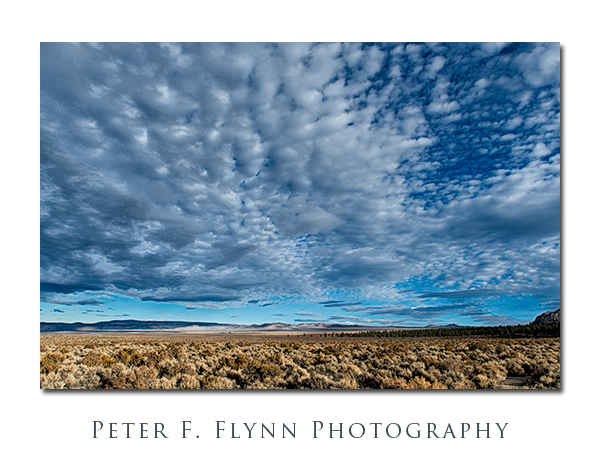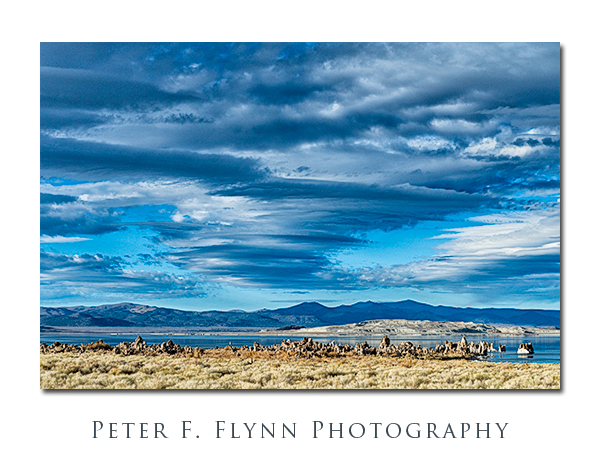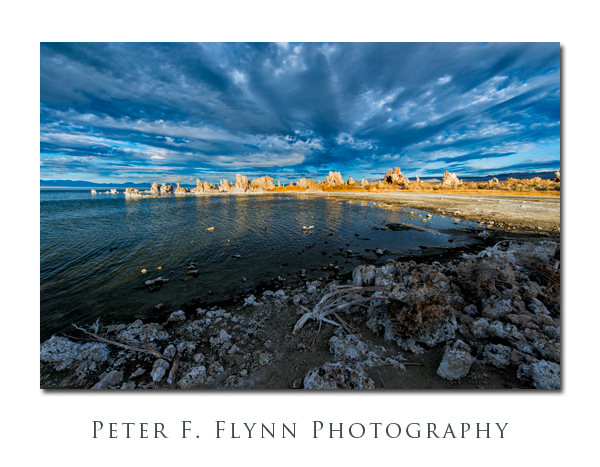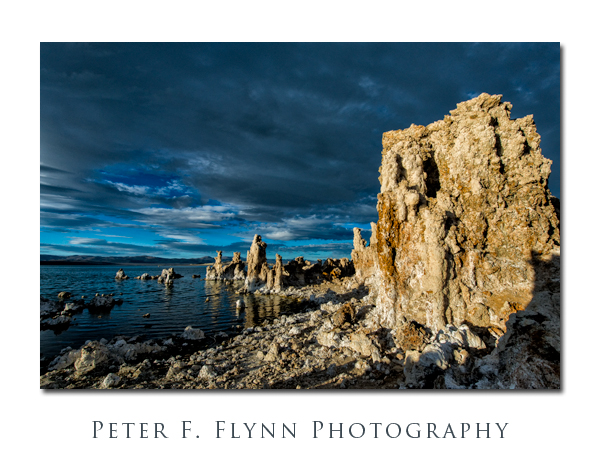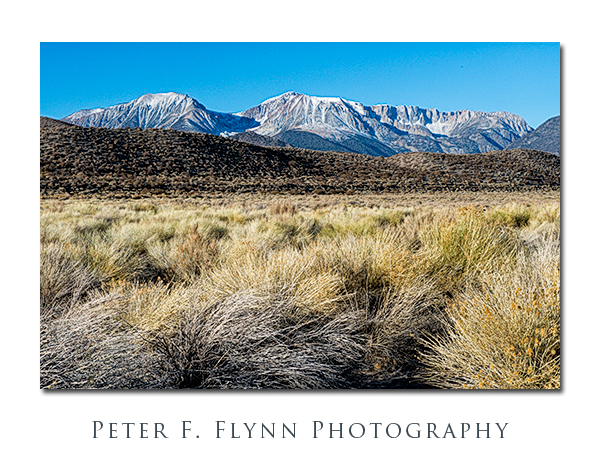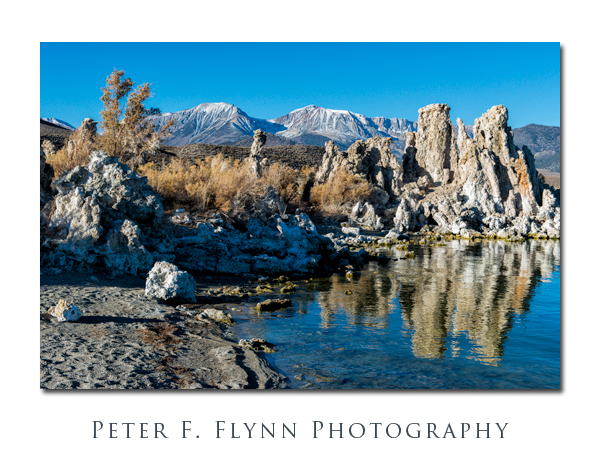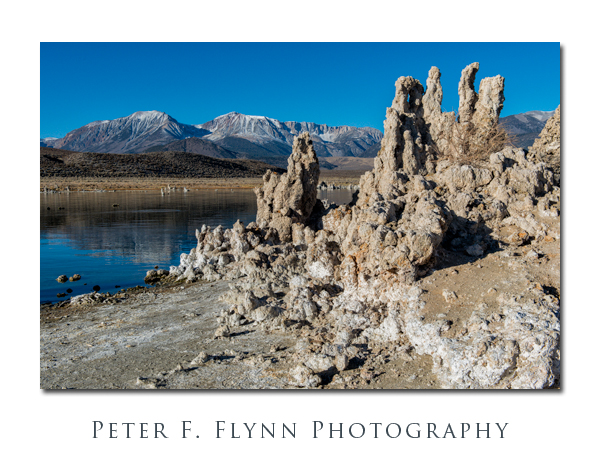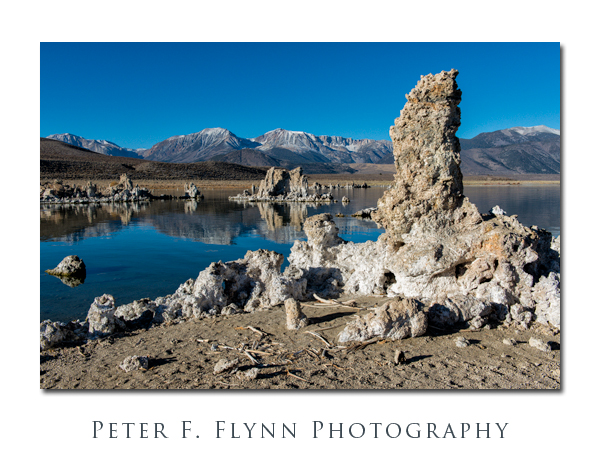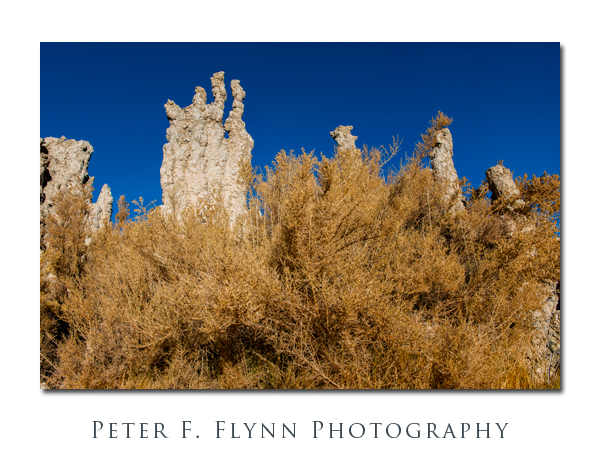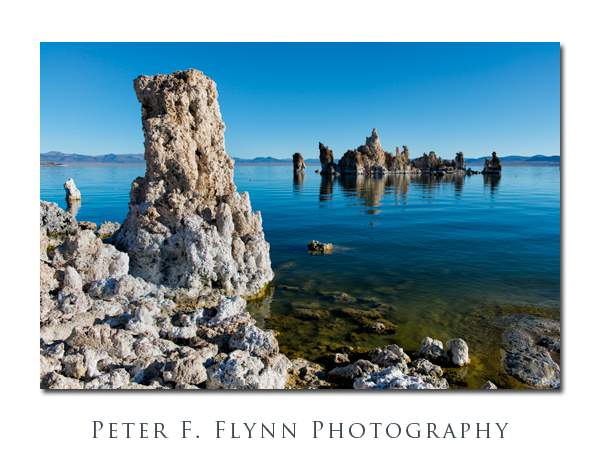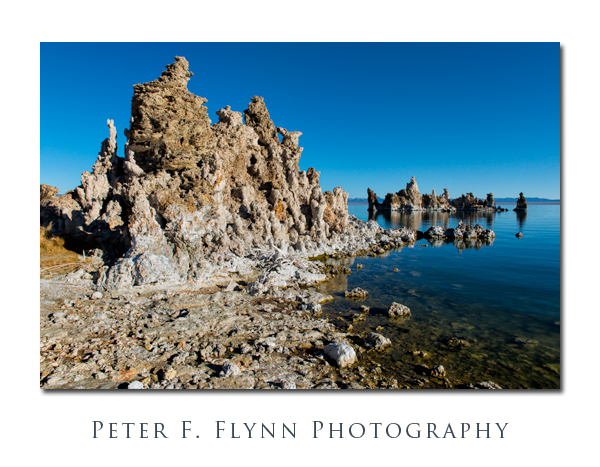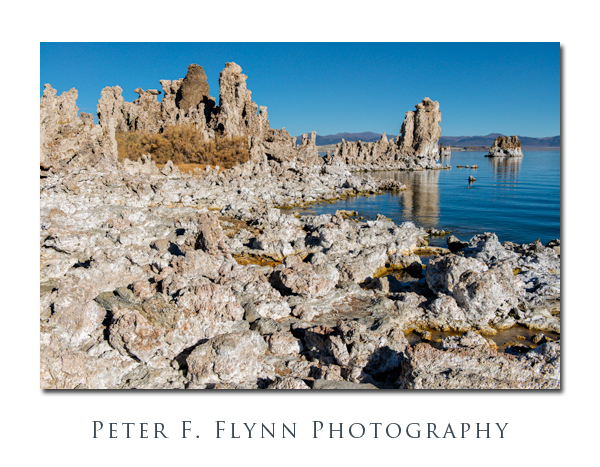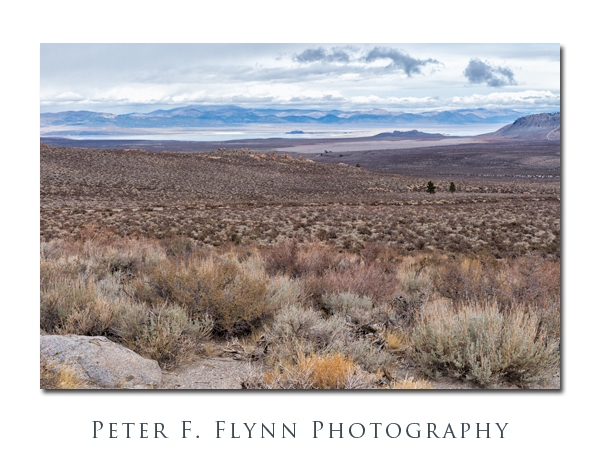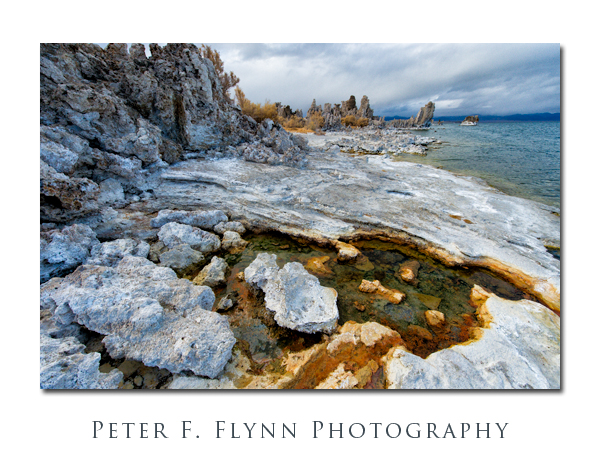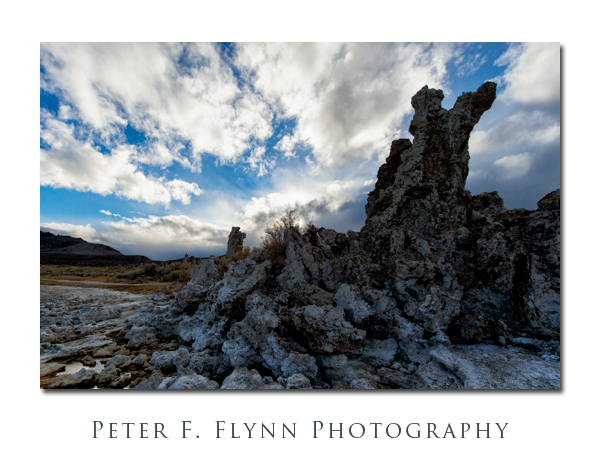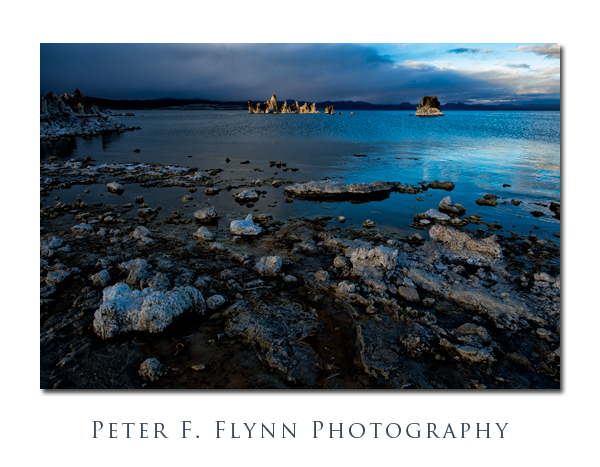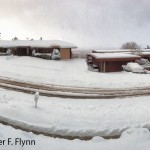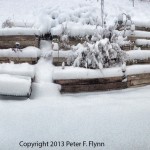I can recommend a visit to your local ghost town. Seeing the remains of an active settlement gone vacant provides a vivid read on reality. There seems to be so much inertia in even a small town that I find it remarkable that a place that was home to thousands could later become completely absent of people. But there it is, unequivocal evidence.
In this entry we explore the famous ghost town of Bodie, CA. The town is preserved as a State Historic Park (SHP), operated by the California Department of Parks and Recreation. The historic district lies along CA-270, about 13 miles east of the junction with US 395.
The preceding three images were made near the ruins of the Head Frame and Machinery site.
There are few casual visitors to Bodie. Virtually everyone who visits is also visiting someplace else as their first choice: Mono Lake most probably, or Mammoth Mountain for skiing, or perhaps just lost heading east out of Yosemite National Park.
There is a wide range of ruination amongst the remaining structures. The minimalist shacks, as shown above, have not stood up very well over time. On the other hand, better-built houses (the McDonald House on the west side of Fuller Street), as shown below, look as though they might still be occupied.
The following three images are of the old Methodist Church, located at the corner of Fuller and Green Streets.
Bodie lies on a treeless and exposed plateau at about 8400 ft above sea level: a rare example of subarctic tundra at latitude 38 degrees north. As you scan through the images in this set I invite to find the trees.
The story of Bodie is the story of gold mining in the American west. In 1859 gold was discovered in the area, but mining in Bodie was overshadowed by efforts in Aurora and Virginia City until 1876, when a large deposit was discovered. Bodie grew rapidly in the next few years, attaining a population of greater than 5000 by 1879. By the early 1880’s the area had been mined-out and growth had reversed course, leading to the long decline of Bodie that was complete by 1915: 50 good years, a solid run by the American standard for mining villages.
The image below is of the Schoolhouse along Green Street. Peering through the front windows reveals the stuff of grammar school life, desks, books, a globe, there is even bits of a lesson remaining on the chalkboard. The second image below is of the Conway House. Robert Conway ran supply wagons between Carson City (NV) and Bodie.
The image above was shot looking west down Green Street. The road in the distance is the Bodie-Masonic Road, which links Bodie with Masonic, CA, another ghost town – never as large as Bodie, nor as well preserved (according to reports, never been there personally).
The two images below are of important buildings on Main Street. The first, directly below, is the Barber Shop. The second image is of the Boone Store and Warehouse, which is right on the corner of Green and Main, which would have been the busiest intersection in town.
The two images below are of the lovely James Stuart Cain House. A beautifully-preserved gallery of glass lies behind a remarkably elaborate exterior wall of small window panes. Although the town was named after the guy who discovered gold here (but who never lived to actually see the town), it was Cain who was the real empire-builder (timber). Cain was the principal landowner during Bodie’s most active period.
Images in this entry were recorded at around mid-day on November 15, 2012, using the Nikon D4 and the AF-S NIKKOR 24-70mm f/2.8G ED lens at various focal lengths. Exposures were in the range of f/8 to f/11, with shutters speeds between 1/800s and 1/1250s, +0.33 EV (corrected in processing). All images recorded handheld.
For more information regarding Bodie and mining in the eastern Sierra, please consult the following resources:
http://www.parks.ca.gov/?page_id=509
The park brochure, with an excellent map, in PDF format may be found here:
http://www.parks.ca.gov/pages/509/files/BodieSHP2010.pdf
Copyright 2013 Peter F. Flynn. No usage permitted without prior written consent. All rights reserved.
